Etiennette Auffray
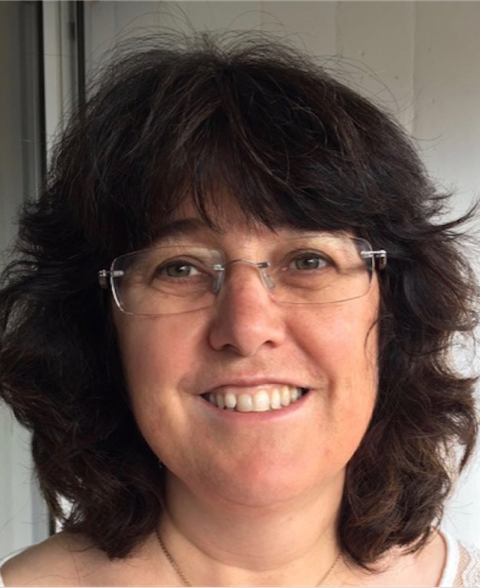
Etiennette Auffray is a senior physicist at CERN, Geneva, Switzerland. She received her PhD degree from University Pierre et Marie Curie (ParisVI) in Paris, France, in 1995.
Since 1992, she works at CERN in the field of scintillators and their applications in particular in high energy physics and medical applications. She actively participated in the construction of the electromagnetic calorimeter of the CMS experiment at CERN made of 75848 crystals of PWO and now works for its operation and upgrade for HL-LHC. She is active in research activities on scintillating materials for future detectors and for the development of PET and TOFPET within the international Crystal Clear collaboration of which she is the spokesperson since 2010. In recent years she has coordinated several European projects related to scintillating materials and their applications in particular for fast timing detectors.
Rafael Ballabriga
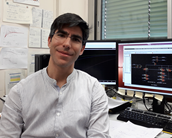 Rafael Ballabriga is a graduate of the Ramon Llull University in Barcelona (BSc 2000, MSc 2002). In 2004, he joined CERN microelectronics group, Geneva (Switzerland), in the framework of the CERN Doctoral Student Program to work in the design and characterization of hybrid pixel detectors.
Rafael Ballabriga is a graduate of the Ramon Llull University in Barcelona (BSc 2000, MSc 2002). In 2004, he joined CERN microelectronics group, Geneva (Switzerland), in the framework of the CERN Doctoral Student Program to work in the design and characterization of hybrid pixel detectors.
Rafael Ballabriga received the IEEE NPSS Best Student Paper Award in 2006. He defended his PhD thesis entitled “The Design and Implementation in 0.13um CMOS of an Algorithm Permitting Spectroscopic Imaging with High Spatial Resolution for Hybrid Pixel Detectors” in 2009 for which he received the best thesis award of the Ramon Llull university doctoral programme 2009-2010. In 2013 he received the IEEE Nuclear and Plasma Sciences Society Radiation Instrumentation Early Career Award.
Rafael Ballabriga has coached younger designers in the design of front-ends in CMOS technologies. Holds three patents and has authored or co-authored more than 70 peer-reviewed journal publications.
G. Blaj
Michael Campbell
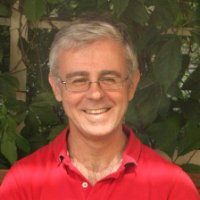 Michael Campbell is the Spokesman of the Medipix2, Medipix3 and Medipix4 Collaborations. He is also leader of the Microelectronics section at CERN. A graduate of the University of Strathclyde in Glasgow, Scotland (B.Sc(Hons) 1983, PhD 1986) he joined CERN in Geneva, Switzerland in 1988 after a short time in the Battelle Institute in the same city. He played an important role in the development of the first pixel detectors used in High Energy Physics and also in the development of the pixel detector readout chips currently used in the Alice and LHCb RICH detectors. He has also played an active role in the dissemination of Hybrid Pixel Detectors from High Energy Physics to many other fields of science. M. Campbell is Honorary Professor in Glasgow University since 2006.
Michael Campbell is the Spokesman of the Medipix2, Medipix3 and Medipix4 Collaborations. He is also leader of the Microelectronics section at CERN. A graduate of the University of Strathclyde in Glasgow, Scotland (B.Sc(Hons) 1983, PhD 1986) he joined CERN in Geneva, Switzerland in 1988 after a short time in the Battelle Institute in the same city. He played an important role in the development of the first pixel detectors used in High Energy Physics and also in the development of the pixel detector readout chips currently used in the Alice and LHCb RICH detectors. He has also played an active role in the dissemination of Hybrid Pixel Detectors from High Energy Physics to many other fields of science. M. Campbell is Honorary Professor in Glasgow University since 2006.
Ricardo Carmona-Galán
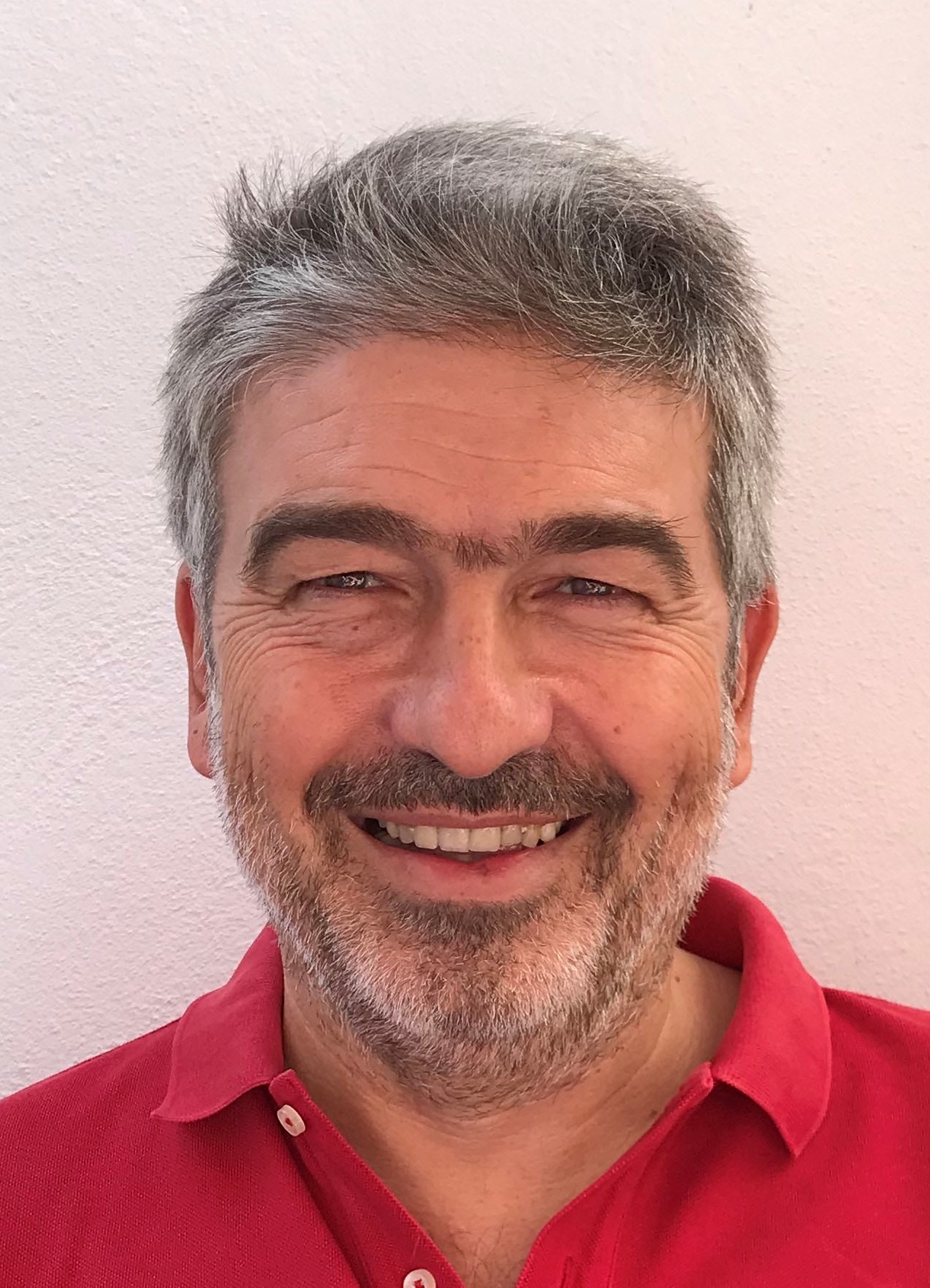
Ricardo Carmona-Galán is Senior Member of the IEEE. He graduated in Electronic Physics and got a Ph.D. in 2002 in Microelectronics from the University of Seville, Spain. He worked as a Research Assistant at the EECS Department of the University of California, Berkeley and he was Assistant Professor at the School of Engineering of the University of Seville. Since 2005, he is a Tenured Scientist at the Institute of Microelectronics of Seville (CSIC-University of Seville). His main research focus has been on VLSI implementation of concurrent sensor/processor arrays for real time image processing and vision. He has designed several vision chips implementing different focal plane operators for early vision processing. He also held a Postdoc at the University of Notre Dame, Indiana, where he worked in interfaces for CMOS compatible nanostructures for multispectral sensing. His current research interests lie in the design of low-power smart image sensors, single-photon detection and ToF estimation, and 3-D integrated circuits for autonomous vision systems. He has coauthored more than 180 journal and conference papers and a book on low- power vision sensors for vision-enabled sensor networks. He is co-inventor of several patents. He has collaborated with start-up companies in Seville (Anafocus) and Berkeley (Eutecus) and co-founded Photonvis, a company dedicated to imaging and vision based on single-photon sensing. Ricardo Carmona-Galán is member of the IEEE CAS and SSC Societies, the IEEE Sensor Council, the ACM and HiPEAC. He is the current Secretary of the IEEE CASS Technical Committee on Sensory Systems. He is the coordinator of a MSCA innovative training network on advanced HW/SW components for integrated/embedded vision systems (ACHIEVE-ITN).
Paula Collins
The design and construction of experiments for HEP typically involve thousands of people, stretch over decades, and have to respect choices which keep the detectors affordable and acceptable to the collaboration and funding agencies. In this inaugural lecture we will discuss some of the basic guiding principles of detector design, focusing in particular on semiconductor based vertex detectors for colliders, and using as a particular example the design, construction and performance of the LHCb experiment and its vertex detector. We will show that along the way individuals have been able to make a profound impact on the course of detector design and technology selection. As examples we will discuss the investigations of radiation damage effects in silicon detectors for the LHC, the design and re-optimisation of the LHCb experiment, and the cross disciplinary links between medical and High Energy Physics Instrumentation. We will have a brief look at the requirements for future experiments, which will surely be heavily drawing on the technologies which will be discussed throughout this Barcelona Technoweek.
Paula Collins is a CERN physicist, currently leading the LHCb VELO (Vertex Detector) project as it prepares the Upgrade installation for Run 3. In the past she has worked on the original LHCb VELO construction, as well as carrying out silicon detector research for the RD50 collaboration. Before joining LHCb she worked on the DELPHI experiment, leading the DELPHI Silicon Tracker project which installed strips and pixels for the LEP2 running. Before joining CERN she worked on various aspects of the DELPHI detector both as a student at the University of Oxford and as a Royal Society Fellow, affiliated with the University of Oxford.
Federico Faccio
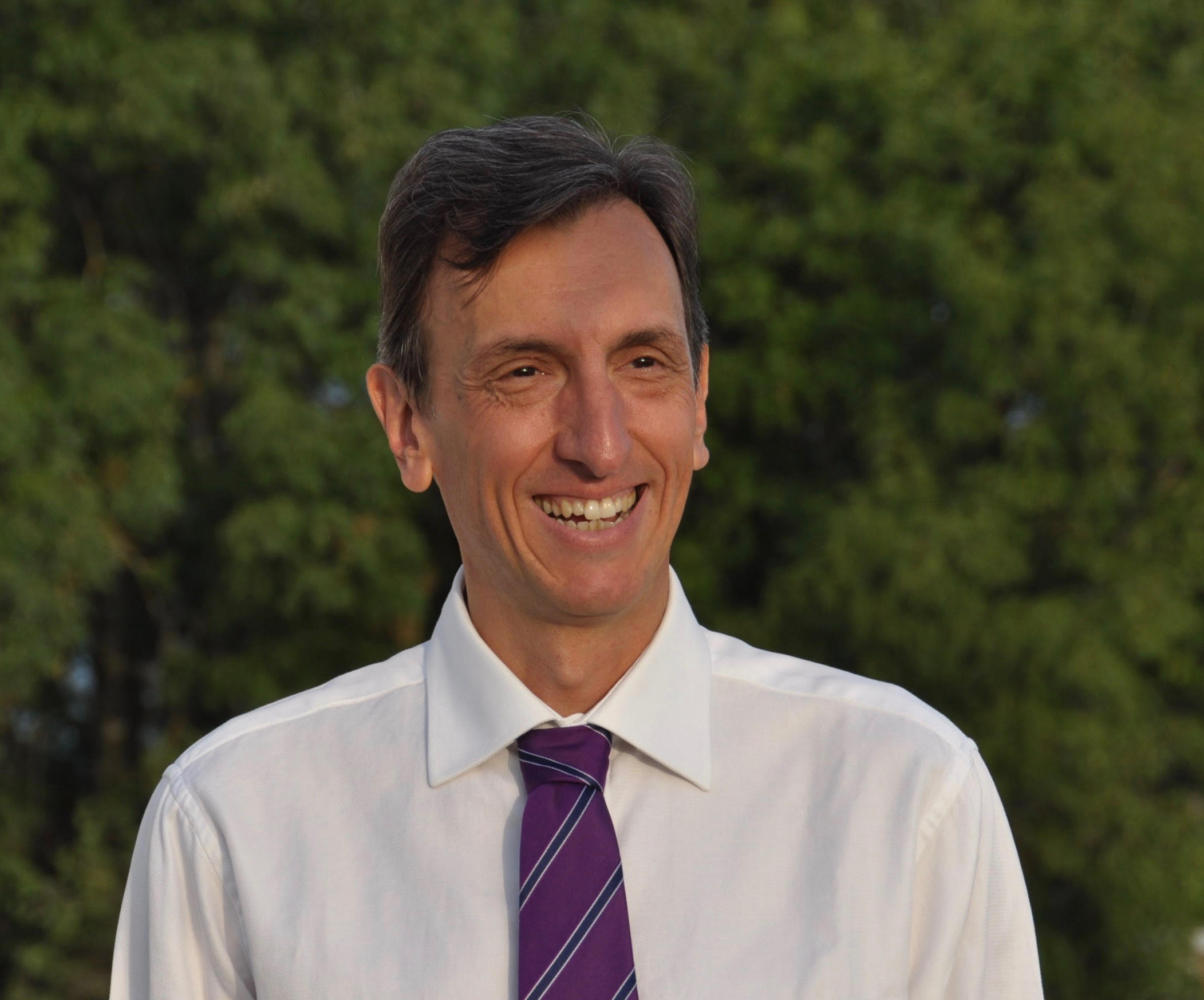 Federico Faccio is the leader of the Microelectronics section at CERN in Geneva, Switzerland. He received the M.S. degree in physics from the University of Turin, Italy (1991) and the Ph.D. degree from INPG in Grenoble, France (1997). He joined CERN in 1991, where he has been mainly involved in the study of the radiation effects on semiconductor technologies and has contributed to the design of radiation-hard ASICs. He played a key role in the introduction of Hardness-By-Design (HBD) techniques for ASIC design in High Energy Physics, he initiated and co-authored the simulation work to estimate Single Event Upset (SEU) rates in an accelerator environment, and recently led the CERN development of radiation- and magnetic-field tolerant DCDC converters. He has authored and co-authored more than 100 technical papers in journals and conference proceedings, receiving awards at the NSREC (Nuclear and Space Radiation Effects), RADECS (Radiation Effects on Components and Systems) and ECCE (Energy Conversion Congress and Exposition) conferences.
Federico Faccio is the leader of the Microelectronics section at CERN in Geneva, Switzerland. He received the M.S. degree in physics from the University of Turin, Italy (1991) and the Ph.D. degree from INPG in Grenoble, France (1997). He joined CERN in 1991, where he has been mainly involved in the study of the radiation effects on semiconductor technologies and has contributed to the design of radiation-hard ASICs. He played a key role in the introduction of Hardness-By-Design (HBD) techniques for ASIC design in High Energy Physics, he initiated and co-authored the simulation work to estimate Single Event Upset (SEU) rates in an accelerator environment, and recently led the CERN development of radiation- and magnetic-field tolerant DCDC converters. He has authored and co-authored more than 100 technical papers in journals and conference proceedings, receiving awards at the NSREC (Nuclear and Space Radiation Effects), RADECS (Radiation Effects on Components and Systems) and ECCE (Energy Conversion Congress and Exposition) conferences.
David Gascón
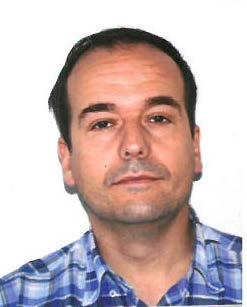 D. Gascon received a BSc degree in electronics engineering from University Ramon Llull, Spain, in 1998, and a PhD degree in electronics from University of Barcelona, Spain in 2008.
D. Gascon received a BSc degree in electronics engineering from University Ramon Llull, Spain, in 1998, and a PhD degree in electronics from University of Barcelona, Spain in 2008.
Currently he is working in the instrumentation group of the Institute of Cosmos Sciences of the University of Barcelona (ICCUB), Spain. He is also the Technical Coordinator of the ICCUB.
His research activity is in the area of mixed signals circuits for high energy physics, astrophysics experiments and medical imaging. Particularly, he is interested in ASIC design for fast photodetector readout and front-end electronics. He has authored or co-authored more than 60 papers related to these subjects.
Erik Heijne
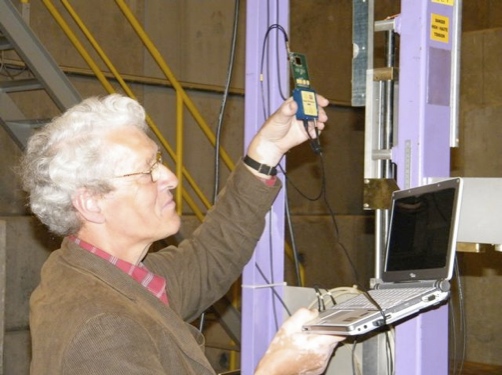 Erik H.M. Heijne studied physics at the University of Amsterdam, where as a student he collaborated
Erik H.M. Heijne studied physics at the University of Amsterdam, where as a student he collaborated
in projects on storage of hydrogen/deuterium in palladium (1969) and on quantum effects in thin silicon
films (1970). He came in 1973 to CERN in Geneva, to work on silicon detectors for the monitoring of
the neutrino beams. On this subject he earned his PhD in 1983 at the University of Amsterdam. In 1980
he demonstrated the silicon microstrip detector in particle physics, which opened new ways for characterizing particles with charm and beauty quarks. This earned him the 2017 European Physical Society Prize in High Energy Physics, with Robert Klanner and Gerhard Lutz, who implemented this instrument in the CERN NA11 experiment. After a stay in Leuven (B) 1984-85 he started with Pierre Jarron in 1986 the microelectronics design group at CERN. An important initiative was the development of an imager-like silicon particle detector for parallel, high rate position and time determination of multiple simultaneous particles, at first named 'micropattern detector' but now widely known as silicon pixel detector. Together with Michael Campbell at CERN, in the framework of the LAA project and the RD19 collaboration, the first complete demonstration of a hybrid pixel detector was given in 1991, in a heavy ion experiment in the Omega spectrometer. Around 1995 he introduced at CERN the ideas for radiation hardness of chips by design and layout, which eventually facilitated the widespread use of custom-designed monolithic CMOS chips in the LHC collider experiments. His interests center on the applications of advanced CMOS technology and various sensor materials for imaging of particle interactions and other physics phenomena involving radiation. He is a Fellow of the IEEE and besides the EPS-HEP 2017 Prize already mentioned, he received in 1999 the Merit Award of the IEEE Nuclear and Plasma Sciences Society.
Xavier Llopart
Xavier Llopart is a graduate of the Ramon Llull University in Barcelona (BSc 1996, MSc 1998). He joined the CERN ESE microelectronics section in 1999 and received his Ph.D. degree from the Mittuniversitetet (Mid Sweden university, Sundsvall, Sweden) In 2007. Xavier is a recognized expert in the design of hybrid pixel detectors ASICs most notably in the Medipix and Timepix ASIC family. Xavier has pioneered the digital-on-top design which includes high-level simulation and verification in the HEP community which helps to mitigate ASIC submission risks. Over the last 15 years he has lead several multi-site design teams to the successful delivery of complex ASICs. Since January 2020 Xavier leads at CERN the CHIPS service which aims to give design support to the HEP ASIC community.
Andrei Nomerotski
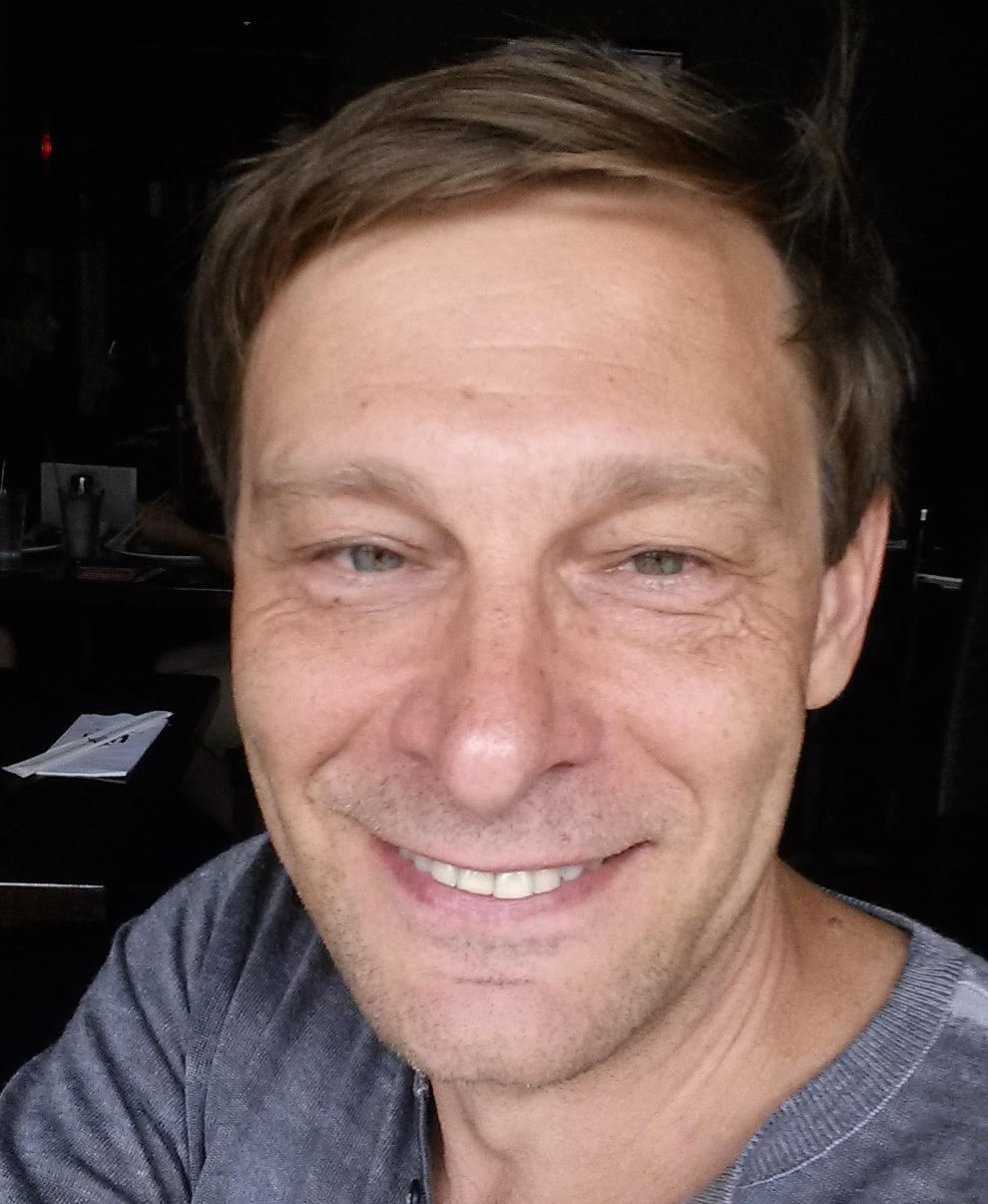 Andrei Nomerotski, Brookhaven National Lab, Physicist. Most of my career I worked on advanced detectors for High Energy Physics and Cosmology, and, lately, for Quantum Information Science - I am a strong believer that it is the new instrumentation and not new theories that lead to breakthroughs in science. I graduated Novosibirsk State University in Russia and received my PhD from University of Padua in Italy in 1996. Over the last two decades I went through different roles in several high profile institutions and I am currently working at Brookhaven National Laboratory in the US on the 3 Gigapixel digital camera for the next generation telescope in Rubin Observatory. I am also leading another project at BNL, and previously at Oxford, to develop ultra-fast cameras for imaging applications in quantum sciences and elsewhere.
Andrei Nomerotski, Brookhaven National Lab, Physicist. Most of my career I worked on advanced detectors for High Energy Physics and Cosmology, and, lately, for Quantum Information Science - I am a strong believer that it is the new instrumentation and not new theories that lead to breakthroughs in science. I graduated Novosibirsk State University in Russia and received my PhD from University of Padua in Italy in 1996. Over the last two decades I went through different roles in several high profile institutions and I am currently working at Brookhaven National Laboratory in the US on the 3 Gigapixel digital camera for the next generation telescope in Rubin Observatory. I am also leading another project at BNL, and previously at Oxford, to develop ultra-fast cameras for imaging applications in quantum sciences and elsewhere.
Paul O'Connor
 Paul O'Connor is a senior scientist and group leader in the Instrumentation Division at Brookhaven National Laboratory. He attended Brown University, earning a master's degree in electrical engineering in 1977 and a Ph.D. in physics in 1980. He joined AT&T Bell Laboratories as a member of the technical staff in 1980 where he developed high-speed semiconductor devices and integrated circuits before joining BNL in 1990. O’Connor’s research interests involve low-noise signal processing systems for particle and astrophysics, photon science, medical imaging, and nuclear nonproliferation. O'Connor is a Member of the American Physical Society and Life Senior Member of the IEEE. He holds the Distinguished R&D and Outstanding Mentor awards from BNL, the Medal for Research Achievement from the Australian CSIRO, and the Howard Wheeler Award from the IEEE. Paul O'Connor is an author of about 150 publications and has seven patents for microelectronic and detector technologies.
Paul O'Connor is a senior scientist and group leader in the Instrumentation Division at Brookhaven National Laboratory. He attended Brown University, earning a master's degree in electrical engineering in 1977 and a Ph.D. in physics in 1980. He joined AT&T Bell Laboratories as a member of the technical staff in 1980 where he developed high-speed semiconductor devices and integrated circuits before joining BNL in 1990. O’Connor’s research interests involve low-noise signal processing systems for particle and astrophysics, photon science, medical imaging, and nuclear nonproliferation. O'Connor is a Member of the American Physical Society and Life Senior Member of the IEEE. He holds the Distinguished R&D and Outstanding Mentor awards from BNL, the Medal for Research Achievement from the Australian CSIRO, and the Howard Wheeler Award from the IEEE. Paul O'Connor is an author of about 150 publications and has seven patents for microelectronic and detector technologies.
Gabriel Parès
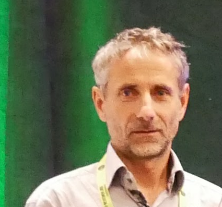 Gabriel Parès has an Engineer degree in “material science” from l’Institut National des Sciences Appliquées (INSA) de Lyon, France and a postgraduate degree in “semiconductor material sciences” from the University of Lyon. He has been working for 27 years in semiconductors and MEMS industry in industrial and R&D fields, formerly for STMicroelectronics and MEMScap, then he joined CEA-leti in 2004. He is currently project leader at CEA-Leti in the Laboratory of Packaging and 3D Integration, working on 2.5D/3D chip stacking, Silicon interposer, TSV integration as well as rebuilt wafer technologies and advanced packaging solutions. Additionally, he is in charge of the Open3D platform providing access to 3D technologies for Leti’s customers. He is an active member of the IMAPS society as technical chair of the IMAPS conference. He holds 7 patents and he is the author of 17 publications in 3D integration and advanced packaging fields.
Gabriel Parès has an Engineer degree in “material science” from l’Institut National des Sciences Appliquées (INSA) de Lyon, France and a postgraduate degree in “semiconductor material sciences” from the University of Lyon. He has been working for 27 years in semiconductors and MEMS industry in industrial and R&D fields, formerly for STMicroelectronics and MEMScap, then he joined CEA-leti in 2004. He is currently project leader at CEA-Leti in the Laboratory of Packaging and 3D Integration, working on 2.5D/3D chip stacking, Silicon interposer, TSV integration as well as rebuilt wafer technologies and advanced packaging solutions. Additionally, he is in charge of the Open3D platform providing access to 3D technologies for Leti’s customers. He is an active member of the IMAPS society as technical chair of the IMAPS conference. He holds 7 patents and he is the author of 17 publications in 3D integration and advanced packaging fields.
Angelo Rivetti
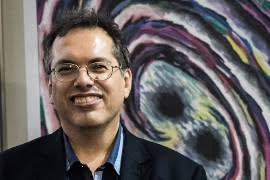 Angelo Rivetti is a Senior Engineer with INFN in Torino and professor of Applied Electronics and Microelectronics with the Department of Physics of the Torino University. A. Rivetti got his laurea in Physics from the University of Torino in March 1995 and the PhD in Electrical Engineering from the Polytechnic School of the same town in February 2000. From 1998 to 2000 he was Doctoral fellow at CERN, where he pursued his research on radiation hard circuits in deep sub-micron CMOS technologies in the framework of the RD49 collaboration and of the ALICE experiment. After a period as research assistant with the University of Torino, he joined INFN as permanent staff in December 2001. His key area of expertise is in the design of mixed-signal integrated circuits for radiation detectors readout, with emphasis on the design of front-end amplifiers, analog-to-digital, time-to-digital converters and on system integration. From 2001 to 2007, A. Rivetti had leading roles in the design and characterization of the front-end electronics of the Silicon Drift Detectors of the ALICE experiment at CERN and in the development of CMAD, a front-end ASIC originally conceived for photomultiplier tubes and now used to read-out several in the COMPASS experiment at CERN. In the same years, he initiated also R&D programs on front-end electronics for hybrid pixel detectors for the experiment PANDA at GSI and NA62 at CERN. The latter development is at the root of a primary technology transfer program, of which A. Rivetti is presently in charge for INFN. From 2010 to 2012, A. Rivetti serves regularly as reviewer for the IEEE Transaction on Nuclear Science, Nuclear Instruments and Methods, the Journal of Instrumentation and the IEEE Transaction on Circuit and System.
Angelo Rivetti is a Senior Engineer with INFN in Torino and professor of Applied Electronics and Microelectronics with the Department of Physics of the Torino University. A. Rivetti got his laurea in Physics from the University of Torino in March 1995 and the PhD in Electrical Engineering from the Polytechnic School of the same town in February 2000. From 1998 to 2000 he was Doctoral fellow at CERN, where he pursued his research on radiation hard circuits in deep sub-micron CMOS technologies in the framework of the RD49 collaboration and of the ALICE experiment. After a period as research assistant with the University of Torino, he joined INFN as permanent staff in December 2001. His key area of expertise is in the design of mixed-signal integrated circuits for radiation detectors readout, with emphasis on the design of front-end amplifiers, analog-to-digital, time-to-digital converters and on system integration. From 2001 to 2007, A. Rivetti had leading roles in the design and characterization of the front-end electronics of the Silicon Drift Detectors of the ALICE experiment at CERN and in the development of CMAD, a front-end ASIC originally conceived for photomultiplier tubes and now used to read-out several in the COMPASS experiment at CERN. In the same years, he initiated also R&D programs on front-end electronics for hybrid pixel detectors for the experiment PANDA at GSI and NA62 at CERN. The latter development is at the root of a primary technology transfer program, of which A. Rivetti is presently in charge for INFN. From 2010 to 2012, A. Rivetti serves regularly as reviewer for the IEEE Transaction on Nuclear Science, Nuclear Instruments and Methods, the Journal of Instrumentation and the IEEE Transaction on Circuit and System.
Ángel Rodríguez
Ángel Rodríguez-Vázquez (IEEE Fellow, 1999) received the Ph.D. degree in Physics-Electronics (Universidad de Sevilla, 1982). After stays at the University of California-Berkeley and Texas A&M University, he became a Full Professor of Electronics (U. Sevilla) in 1995.
He co-founded the Instituto de Microelectrónica de Sevilla, a joint undertaken of Consejo Superior de Investigaciones Científicas (CSIC) and Universidad de Sevilla, and started a Research Lab on Analog and Mixed-Signal Circuits for Sensors and Communications.
He has always been looking for a balance between long-term research and industrial innovation. In 2001, he co-founded AnaFocus Ltd. and served as CEO until June 2009, when the company reached maturity as a worldwide provider of smart CMOS imagers. The company was acquired by E2V in 2014 and is currently part of Teledyne Technologies. He participated in the launching of AnaLogic Ltd, and Photonvis Ltd. He has eleven patents filed; AnaFocus and Photonvis started on patents co-authored by him on vision chip architectures and SPAD sensors, respectively.
His research embraces smart imagers, vision chips, and biomedical circuits, always emphasizing system integration. His Lab designed several high-performance mixed-signal ICs in the framework of Spanish, European, and USA R&D programs. These included three generations of vision chips, analog front-ends for XDSL MoDems, ADCs for wireless communications, ADCs for automotive sensors, chaotic signals generators, complete MoDems for power-line communications, etc. Most of these chips were state-of-the-art in their respective fields, and some entered in massive production. He also produced teaching materials on data converters that were delivered to companies and got the Quality Label of EuroPractice.
His publications have ~10,300 citations and several best paper awards: the IEEE Guillemin-Cauer Award, two Wiley’s IJCTA Awards, two IEEE ECCTD Awards, one IEEE-ISCAS Award, one SPIE-IST Electronic Imaging Award, the IEEE ISCAS Best Demo Award, and the IEEE ICECS Best Demo Award. He has an h-index of 50 and an i10-index of 200 (Google Scholar). He is a member of Academia Europaea and got the 2019 Mac Van Valkenburg award of IEEE-CASS for outstanding technical achievements.
He has served and his serving as Editor and member of the Editorial Board for IEEE and non-IEEE journals. He chaired several international IEEE (NDES 1996, CNNA 1996, ECCTD 2007, ESSCIRC 2010, ICECS 2013 and ISCAS 2020) and SPIE conferences. He served as VP Region 8 of IEEE CASS (2009-2012) and Chair of the IEEE CASS Fellow Evaluation Committee (2010, 2012, 2013, 2014, and 2015).
Hamid Sabet
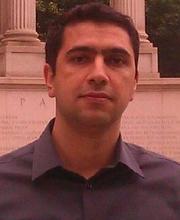 Hamid Sabet is Assistant Professor of Radiology at Harvard Medical School and Cyclotron Physicist at Massachusetts General Hospital. He is a member of scientific advisory board to Gordon Center for Medical Imaging at MGH Radiology and director of Radiation Physics and Instrumentation Lab within the Gordon Center. His current research focus is on radiation imaging and instrumentation as it pertains to PET, SPECT, CT, and intraoperative multimodality imaging. Dr. Sabet has been Principal Investigator of NIH and industry grants with project themes on innovative detector designs for nuclear medicine imaging modalities mainly by implementing novel quantum optics techniques including laser induced optical barrier methodology. Prior to his arrival at MGH-Harvard early 2014, he worked in industry and academic institutions for 6 years after earning his Ph.D. in Quantum Science & Energy Engineering from Tohoku University in 2008. He serves as ad-hoc reviewer for several scientific journals and associate editor for two journals and has been ad-hoc reviewer, session chair, and topic convener for IEEE Nuclear Science Symposium and Medical Imaging Conference. He is currently a member of Nuclear Medical and Imaging Sciences Council of the IEEE’s NPSS. Dr. Sabet has been a member of advising committee or external jury for PhD, and MSc candidates, and a member of teaching faculty for Harvard-MIT course in nuclear medicine on topics covering PET, SPECT, and gamma camera physics and instrumentation.
Hamid Sabet is Assistant Professor of Radiology at Harvard Medical School and Cyclotron Physicist at Massachusetts General Hospital. He is a member of scientific advisory board to Gordon Center for Medical Imaging at MGH Radiology and director of Radiation Physics and Instrumentation Lab within the Gordon Center. His current research focus is on radiation imaging and instrumentation as it pertains to PET, SPECT, CT, and intraoperative multimodality imaging. Dr. Sabet has been Principal Investigator of NIH and industry grants with project themes on innovative detector designs for nuclear medicine imaging modalities mainly by implementing novel quantum optics techniques including laser induced optical barrier methodology. Prior to his arrival at MGH-Harvard early 2014, he worked in industry and academic institutions for 6 years after earning his Ph.D. in Quantum Science & Energy Engineering from Tohoku University in 2008. He serves as ad-hoc reviewer for several scientific journals and associate editor for two journals and has been ad-hoc reviewer, session chair, and topic convener for IEEE Nuclear Science Symposium and Medical Imaging Conference. He is currently a member of Nuclear Medical and Imaging Sciences Council of the IEEE’s NPSS. Dr. Sabet has been a member of advising committee or external jury for PhD, and MSc candidates, and a member of teaching faculty for Harvard-MIT course in nuclear medicine on topics covering PET, SPECT, and gamma camera physics and instrumentation.
Francesc Salvat
Francesc Salvat-Pujol received a PhD degree from the Technische Universität Wien in 2012 for his work on the emission of secondary electrons from solids under electron bombardment, using a custom built time-of-flight coincidence spectrometer, combined with the theoretical modelling of electron interactions in solids within the semiclassical
dielectric formalism, and the Monte Carlo simulation of sub-keV electron transport near solid surfaces with a custom-written code.
After a postdoctoral stay at the Goethe Universität Frankfurt (2012-2015), developing applications based on density functional theory to study electronic and magnetic properties of novel materials from first principles, Francesc joined the National Institute of Standards and Technology (NIST) to work on a refined electron transport model for
NIST's Monte Carlo tool for nanoscale metrology with electron beams (JMONSEL). In late 2016, Francesc joined CERN as an applied physicist working among other on the refinement and extension of low-energy hadron-nucleus interaction models in the general-purpose Monte Carlo simulation code FLUKA.
D. Schaart
 Dennis R. Schaart heads the Medical Physics & Technology section at Delft University of Technology (TU Delft). He worked in academia as well as in the medical device industry, always at the intersection of physics, technology, and medicine. He started as an R&D physicist at Nucletron (now Elekta), where he developed new devices for radiotherapy. He obtained his doctoral degree (with highest honors) in 2002. He then joined TU Delft to set up a new research line on in-vivo molecular imaging technology, with special focus on ultrafast detectors for time-of-flight positron emission tomography (TOF-PET). His team was among the first to explore the use of silicon photomultipliers (SiPMs) in TOF-PET and has published many works on the fundamentals of SiPM-based detectors and the theory of ultrafast timing. Dennis’ current research interests range from novel technologies for in vivo molecular imaging to image guidance in radiotherapy. He leads the Technology for Oncology programme of the TU Delft Health Initiative and serves as a member of the R&D Program Board of the Holland Particle Therapy Centre (HollandPTC). He has (co-)authored more than 150 peer-reviewed papers and is a frequently invited speaker.
Dennis R. Schaart heads the Medical Physics & Technology section at Delft University of Technology (TU Delft). He worked in academia as well as in the medical device industry, always at the intersection of physics, technology, and medicine. He started as an R&D physicist at Nucletron (now Elekta), where he developed new devices for radiotherapy. He obtained his doctoral degree (with highest honors) in 2002. He then joined TU Delft to set up a new research line on in-vivo molecular imaging technology, with special focus on ultrafast detectors for time-of-flight positron emission tomography (TOF-PET). His team was among the first to explore the use of silicon photomultipliers (SiPMs) in TOF-PET and has published many works on the fundamentals of SiPM-based detectors and the theory of ultrafast timing. Dennis’ current research interests range from novel technologies for in vivo molecular imaging to image guidance in radiotherapy. He leads the Technology for Oncology programme of the TU Delft Health Initiative and serves as a member of the R&D Program Board of the Holland Particle Therapy Centre (HollandPTC). He has (co-)authored more than 150 peer-reviewed papers and is a frequently invited speaker.
Walter Snoeys
 Walter Snoeys received the MS and Ph.D. degrees in electrical engineering from the Katholieke Universiteit Leuven in 1987, and from Stanford University in 1992, respectively. In 1987 he received the Procter and Gamble ETC Fellowship from the Belgian American Educational Foundation. From 1990 to 1992 he was a consultant in the area of integrated sensors. From 1992 to 1994 he worked on CMOS technology integration in Mietec, Alcatel, Belgium. In 1994 he joined the microelectronics group at CERN, Geneva, Switzerland. Since his Ph.D. work on a monolithic pixel detector for high energy physics, he has been working almost continuously on monolithic sensors, particle detectors and pixel sensor readout circuits, and recently on CMOS monolithic sensors for the ALICE and ATLAS experiments, and for the new R&D program of the Experimental Physics Department at CERN.
Walter Snoeys received the MS and Ph.D. degrees in electrical engineering from the Katholieke Universiteit Leuven in 1987, and from Stanford University in 1992, respectively. In 1987 he received the Procter and Gamble ETC Fellowship from the Belgian American Educational Foundation. From 1990 to 1992 he was a consultant in the area of integrated sensors. From 1992 to 1994 he worked on CMOS technology integration in Mietec, Alcatel, Belgium. In 1994 he joined the microelectronics group at CERN, Geneva, Switzerland. Since his Ph.D. work on a monolithic pixel detector for high energy physics, he has been working almost continuously on monolithic sensors, particle detectors and pixel sensor readout circuits, and recently on CMOS monolithic sensors for the ALICE and ATLAS experiments, and for the new R&D program of the Experimental Physics Department at CERN.
Katsuyuki Taguchi
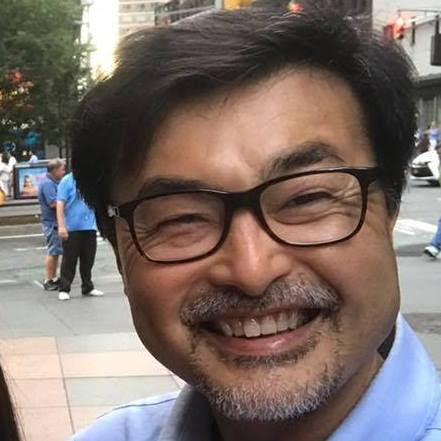 Katsuyuki “Ken” Taguchi, Ph.D. is a Professor of Department of Radiology at Johns Hopkins University. He worked for Toshiba Medical Systems from 1991 to 2005 and was involved with development of several revolutionary CT systems such as multi-slice CT, cardiac CT, and four-dimensional CT. He joined the Johns Hopkins University in 2005 and has been working on motion-compensated cardiac imaging, photon counting spectral CT, and interventional x-ray imaging. He is interested in image reconstruction, modeling and compensation methods for physics and detectors, and is also the creator of photon counting toolkit (PcTK) and an editor of a book, “Spectral, photon counting computed tomography: Technology and applications.”
Katsuyuki “Ken” Taguchi, Ph.D. is a Professor of Department of Radiology at Johns Hopkins University. He worked for Toshiba Medical Systems from 1991 to 2005 and was involved with development of several revolutionary CT systems such as multi-slice CT, cardiac CT, and four-dimensional CT. He joined the Johns Hopkins University in 2005 and has been working on motion-compensated cardiac imaging, photon counting spectral CT, and interventional x-ray imaging. He is interested in image reconstruction, modeling and compensation methods for physics and detectors, and is also the creator of photon counting toolkit (PcTK) and an editor of a book, “Spectral, photon counting computed tomography: Technology and applications.”
Sami Vähänen
 M.Sc. Sami Vähänen, Chief Technology officer and co-founder of Advacam Ltd. Sami’s unique expertise is in micro packaging of variety of radiation sensor components. He's also experienced in microelectronics thin film processing in industrial and research organizations. His core competences are in flip chip based micro packaging and Through Silicon Via (TSV) technologies. Over the last 15 years he has been working at an imaging technology company as a coordinator of micro packaging activities, at VTT as a hybrid integration expert, at CERN as a detector packaging consultant and cost optimiser, and as a team manager of 3D integration technologies at VTT.
M.Sc. Sami Vähänen, Chief Technology officer and co-founder of Advacam Ltd. Sami’s unique expertise is in micro packaging of variety of radiation sensor components. He's also experienced in microelectronics thin film processing in industrial and research organizations. His core competences are in flip chip based micro packaging and Through Silicon Via (TSV) technologies. Over the last 15 years he has been working at an imaging technology company as a coordinator of micro packaging activities, at VTT as a hybrid integration expert, at CERN as a detector packaging consultant and cost optimiser, and as a team manager of 3D integration technologies at VTT.
Sergei Vinogradov
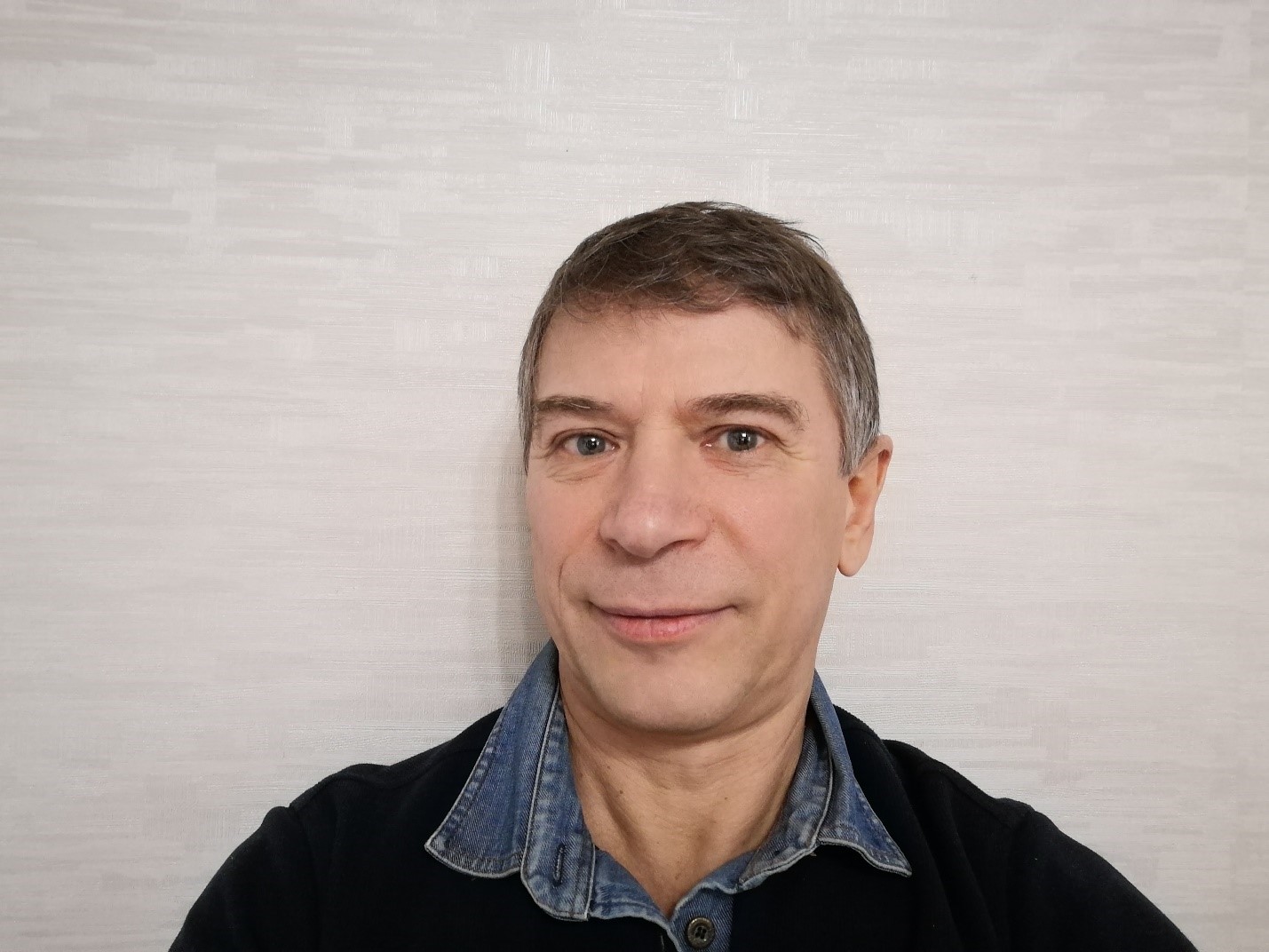 Sergey Vinogradov received the M.Sc. degree in physics from the Moscow State University in 1981 and the Ph.D. degree in solid-state physics from the P.N. Lebedev Physical Institute of the Russian Academy of Sciences in 1992. Since then, he has been a Senior Research Scientist with the Solid State Physics Division. From 2003 to 2009 he was the CEO of the Russian subsidiary of Amplification Technologies (USA) dedicated to R&D of proprietary SiPMs (Discrete Amplification Photon Detectors). In 2013 - 2016 he was a Senior Marie Curie Fellow conducting R&D on the EC FP7 grant “SiPM in-depth” with the University of Liverpool and the Cockcroft Institute of Accelerator Science and Technology (UK). He is a collaborator with the NRNU MEPhI, CERN CMS, KETEK, RadiaBeam Technologies, and an expert member of the EU projects “SENSE – a roadmap for the ideal low light level sensor development” and “FAST – Fast Advanced Scintillator Timing”.
Sergey Vinogradov received the M.Sc. degree in physics from the Moscow State University in 1981 and the Ph.D. degree in solid-state physics from the P.N. Lebedev Physical Institute of the Russian Academy of Sciences in 1992. Since then, he has been a Senior Research Scientist with the Solid State Physics Division. From 2003 to 2009 he was the CEO of the Russian subsidiary of Amplification Technologies (USA) dedicated to R&D of proprietary SiPMs (Discrete Amplification Photon Detectors). In 2013 - 2016 he was a Senior Marie Curie Fellow conducting R&D on the EC FP7 grant “SiPM in-depth” with the University of Liverpool and the Cockcroft Institute of Accelerator Science and Technology (UK). He is a collaborator with the NRNU MEPhI, CERN CMS, KETEK, RadiaBeam Technologies, and an expert member of the EU projects “SENSE – a roadmap for the ideal low light level sensor development” and “FAST – Fast Advanced Scintillator Timing”.
He is a co-author of more than 50 scientific papers and 6 patents, a recognized reviewer and co- chair/convener at the SiPM-related events, a Senior Member of the IEEE and SPIE.
His research interests include almost all aspects of the R&D of solid-state photodetectors and SiPMs: physics and designs, experimental and theoretical studies, probabilistic modeling, metrology and characterization, performance analysis, and applications.
Claire Vallance
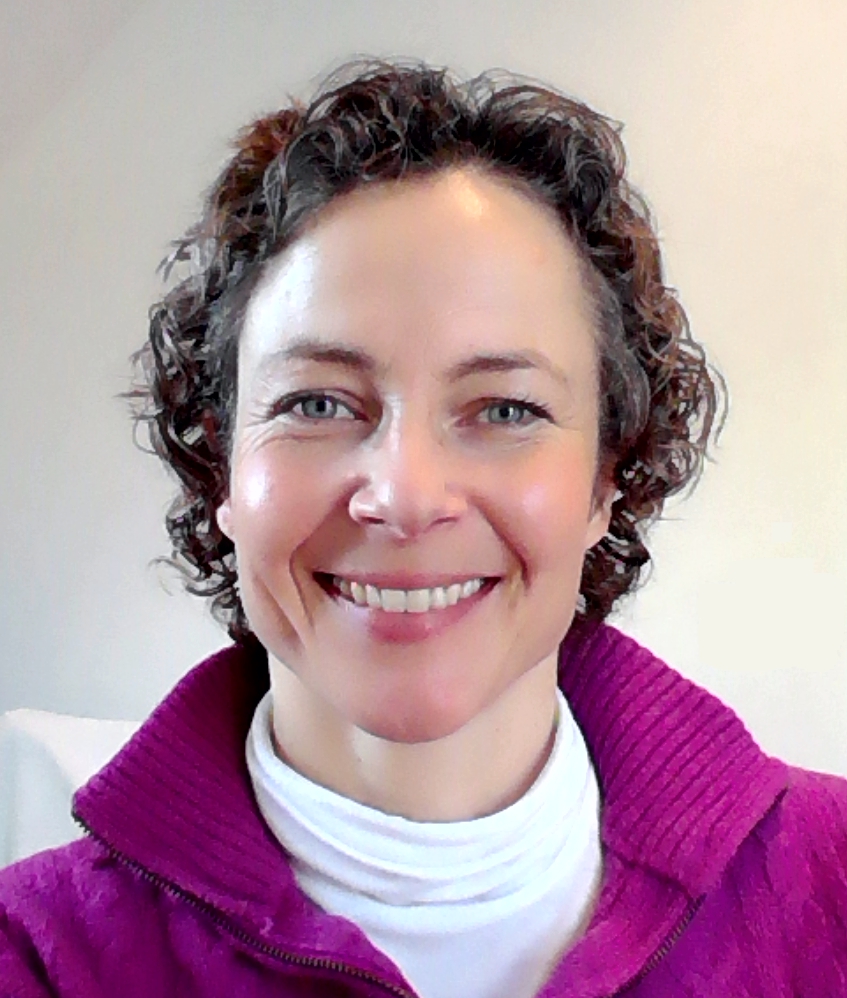 Claire Vallance is a Professor of Physical Chemistry at the University of Oxford, Tutorial Fellow in Physical Chemistry at Hertford College, and current President of the Faraday Division of the Royal Society of Chemistry. Her current research interests include chemical reaction dynamics and velocity-map imaging, microcavity spectroscopy, and applications of spectroscopy and mass spectrometry in medicine. She is co-inventor of the PImMS (pixel imaging mass spectrometry) ultrafast imaging sensor, and cofounder of the spin−out company Oxford HighQ.
Claire Vallance is a Professor of Physical Chemistry at the University of Oxford, Tutorial Fellow in Physical Chemistry at Hertford College, and current President of the Faraday Division of the Royal Society of Chemistry. Her current research interests include chemical reaction dynamics and velocity-map imaging, microcavity spectroscopy, and applications of spectroscopy and mass spectrometry in medicine. She is co-inventor of the PImMS (pixel imaging mass spectrometry) ultrafast imaging sensor, and cofounder of the spin−out company Oxford HighQ.

